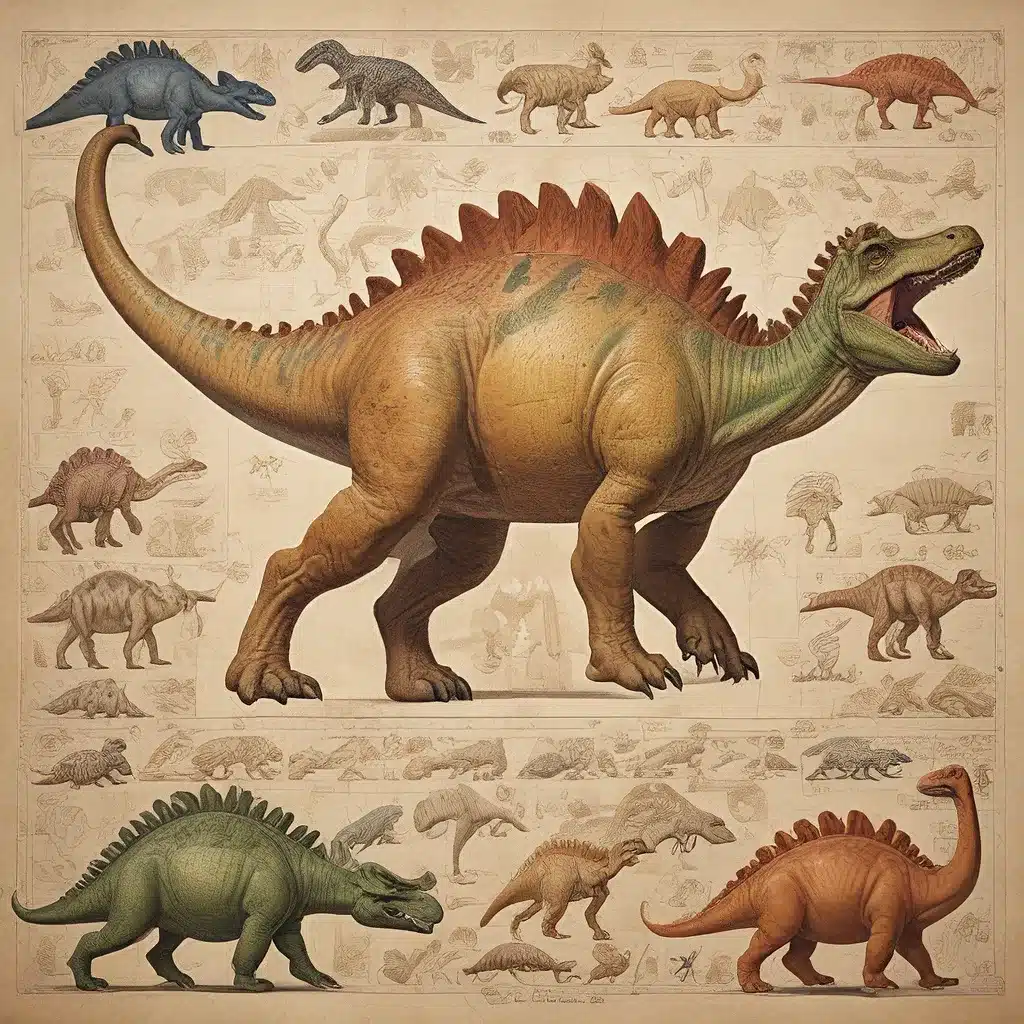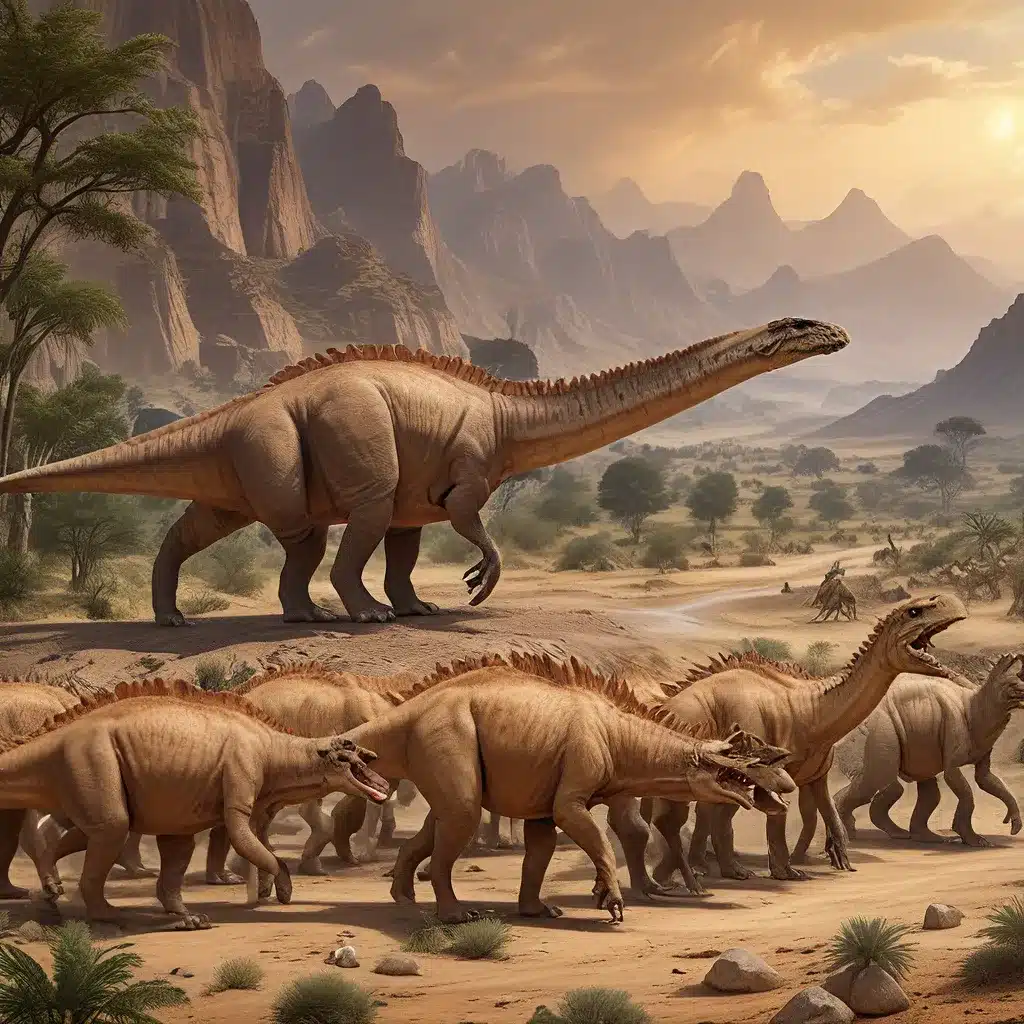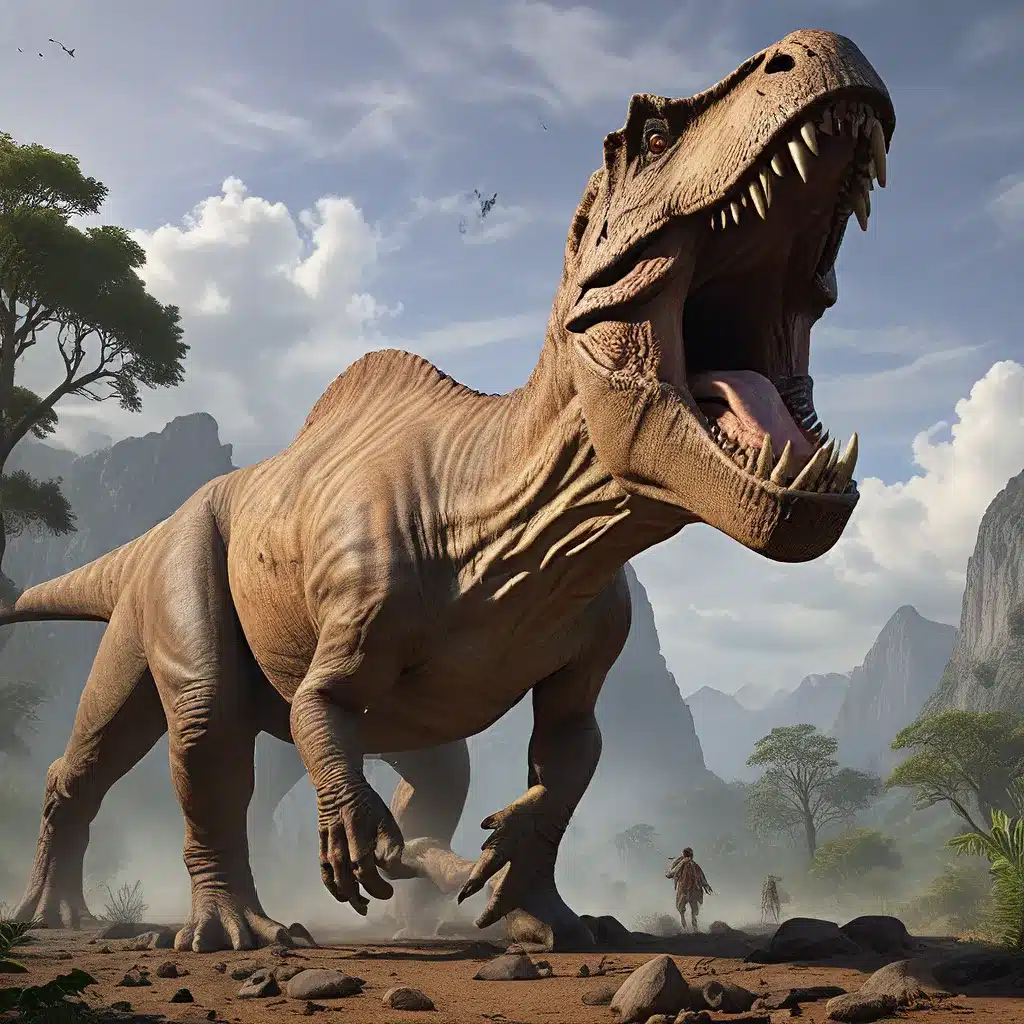Decoding the Prehistoric Palate: What Digital Analysis Reveals About a T-Rex’s Diet

Decoding the Prehistoric Palate: What Digital Analysis Reveals About a T-Rex’s Diet
The Tyrannosaurus rex. For over a century, its name has been synonymous with the ultimate predator. A colossal titan with a head full of teeth like railroad spikes, it has dominated our collective imagination. But beyond the cinematic roars and museum dioramas lies a profound scientific mystery: What did a T-Rex really eat? For decades, our answers were based on broad strokes—big teeth must mean big prey. Today, we are moving beyond simple observation and entering an era of digital forensics. We are learning to decode the prehistoric past.
Much like a data scientist uses an online tool to decode Base64, translating a seemingly random string of characters like Y29kZQ== into the simple word “code,” paleontologists now wield sophisticated digital tools to translate the fossil record. The bones, bite marks, and even fossilized feces are no longer just static objects; they are complex data packets, encoded messages from a lost world. By applying modern analytical techniques, we are stripping away the noise and deciphering the truth locked within.
The Fossil Record: An Encoded Message from the Cretaceous
The evidence of a T-Rex’s diet has always been there, scattered across the badlands of North America. A skeleton of a Triceratops with deep, gouging tooth marks. A T-Rex tooth embedded in the tailbone of an Edmontosaurus. A massive, fossilized dropping, known as a coprolite, packed with crushed bone fragments.
For years, interpreting this evidence was a largely analog process. Scientists would compare the shape of the tooth to the shape of the mark, make plaster casts, and draw conclusions. While groundbreaking, this approach had its limits. It couldn’t quantify the force of the bite, analyze the chemical composition of the meal, or peer inside a fossil without destroying it. The data was there, but the tools to fully decode it were missing. The story was incomplete, like a message with missing characters.
The Digital Decoder: Tools of the Modern Paleontologist
The last two decades have armed paleontologists with a powerful digital toolkit, allowing them to probe these ancient clues with unprecedented precision.
Computed Tomography (CT) Scanning: Imagine trying to read a message sealed inside an envelope. A CT scanner allows scientists to do just that with fossils. By taking thousands of X-ray images and compiling them into a 3D model, they can see the internal structure of a T-Rex skull, tooth, or a victim’s bone. This is the paleontological equivalent of a decoder that strips away non-encoded whitespaces and rock matrix to safeguard the input’s integrity, revealing pristine data hidden within. This technique has allowed researchers to map the T-Rex’s brain cavity, revealing massive olfactory bulbs that suggest an incredible sense of smell—perfect for tracking prey or sniffing out a distant carcass.
Finite Element Analysis (FEA): This is where the digital T-Rex truly comes to life. Using the 3D models from CT scans, engineers and paleontologists apply FEA, a computational method used to predict how an object reacts to real-world forces. They can simulate the immense stress of a T-Rex bite, identifying weak points and calculating the raw power. The results are staggering: a T-Rex could bite down with a force of nearly 12,800 pounds, enough to pulverize bone. It wasn’t just slicing meat; it was a living bone-crusher.
Digital Microscopy and Isotope Analysis: On a smaller scale, powerful microscopes analyze the microscopic wear patterns on T-Rex teeth, revealing a history of scraping flesh and crushing bone. Furthermore, chemical analysis of the fossilized bone itself acts as a decoder. By studying the ratios of certain chemical isotopes, scientists can determine an animal’s position in the food web, confirming T-Rex’s status as a top-tier apex predator.
Decoding the T-Rex Menu: Scavenger, Hunter, or Both?
The long-standing debate has been whether T-Rex was a noble hunter or a lowly scavenger. Digital analysis reveals the answer is more complex.
The evidence for active hunting is now undeniable. The FEA models showing a bone-shattering bite are a key indicator. Such power is evolutionary overkill for a pure scavenger. More concretely, the famous fossil of an Edmontosaurus tail shows a T-Rex tooth embedded in the vertebrae, surrounded by healed bone growth. This was an animal that was bitten, survived, and escaped. It’s a snapshot of a failed hunt, not a scavenging event.
However, the evidence for scavenging is also strong. The highly developed sense of smell, revealed by CT scans, would have made T-Rex an expert at locating carcasses from miles away. A wise predator doesn’t turn down a free meal. The truth, decoded from these multiple independent data entries, is that T-Rex was an opportunist, much like most large predators today. It was a formidable hunter that would also readily scavenge when the opportunity arose.
T-Rex Diet: The Encoded Clues
| Fossil “Data Packet” | Decoding Method | Revealed Information |
|---|---|---|
| Edmontosaurus Tail Vertebrae | CT Scanning | Healed bite wound; proof of hunting |
| T-Rex Skull | Finite Element Analysis (FEA) | Bone-crushing bite force |
| T-Rex Coprolite (Feces) | Chemical & Physical Analysis | Diet of meat & crushed bone |
| T-Rex Brain Case | CT Scanning | Large olfactory bulbs; keen smell |
| Juvenile T-Rex Skeleton | Comparative Anatomy | Lighter build; likely ate smaller prey |
A Global Effort in Deciphering the Past
Decoding the prehistoric world is a global endeavor. Just as a Base64 decoder is available online in English, German (Dekodieren), French (Décodage), and Chinese (解码), the scientific language of discovery is universal. Research teams in North America, Europe, and Asia all contribute to the global knowledge base, analyzing fossils and publishing data that helps complete the picture. This collaborative approach ensures that every new fossil, every new scan, and every new analysis adds another decoded piece to the grand puzzle of life in the Cretaceous period.
The story of the T-Rex’s diet is no longer a simple tale of a monster. It’s a nuanced narrative of a complex ecological opportunist, revealed not just by digging in the dirt, but by processing, analyzing, and decoding data. We have taught our computers to speak dinosaur, and in doing so, we are finally coming to understand the true nature of the tyrant king.

Additional Information
Of course. After reviewing your request and the provided search results, it’s important to clarify a key point first.
Clarification on Provided Search Results
The search results you’ve provided are all related to Base64 encoding and decoding. This is a computer science method used to convert binary data (like images or files) into a text-based format for safe transmission over systems that are designed to handle text. The links are for online tools that perform this conversion.
This topic is entirely unrelated to the paleontological analysis of a T-Rex’s diet. The term “decoding” in your requested title, “Decoding the Prehistoric Palate,” is used metaphorically, meaning “to understand” or “to decipher.” It does not refer to the technical process of Base64 decoding.
Therefore, I will proceed by providing a detailed, in-depth article on the requested topic of the T-Rex’s diet, using the latest scientific understanding based on digital analysis in paleontology. The provided links on Base64 will not be incorporated, as they are not relevant to the subject matter.
Decoding the Prehistoric Palate: What Digital Analysis Reveals About a T-Rex’s Diet
The Tyrannosaurus rex reigns supreme in the public imagination as the ultimate prehistoric predator. For decades, our understanding of this magnificent carnivore was built from silent, static bones. We knew it was big, had terrifying teeth, and ate meat. But the crucial questions remained: How did it hunt? What exactly did it eat? Was it a noble hunter or a lumbering scavenger?
Today, the field of paleontology is undergoing a digital revolution. By combining fossil evidence with sophisticated computer technology, scientists are moving beyond bones to “decode” the T-Rex’s behavior, capabilities, and, most revealingly, its diet. This digital analysis provides a far more dynamic and detailed picture of the prehistoric world than ever before.
1. The Foundation: Traditional Clues to the T-Rex Diet
Before the digital age, paleontologists relied on direct and indirect physical evidence:
- Fossilized Stomach Contents: The holy grail of dietary evidence. In a landmark 2023 discovery, the fossil of a juvenile Gorgosaurus (a close relative of T-Rex) was found with its last meals preserved in its stomach cavity: the legs of two small, bird-like dinosaurs. While not a T-Rex, this provides concrete proof that young tyrannosaurs hunted small prey.
- Coprolites (Fossilized Dung): A massive coprolite attributed to a T-Rex was found in Saskatchewan, Canada. It was packed with crushed and partially digested bone fragments from a juvenile herbivore, likely a Triceratops or a duck-billed dinosaur. This shows T-Rex didn’t just strip meat; it consumed bone as well.
- Bite Marks: The most common evidence. Countless fossils of herbivores like Triceratops and Edmontosaurus bear the unmistakable puncture and scrape marks of T-Rex teeth. Some show signs of healing, proving the T-Rex attacked a living animal that later escaped—irrefutable evidence of active predation.
While compelling, this evidence provides only snapshots. To understand the how and why, scientists turned to digital tools.
2. The Digital Revolution: Reconstructing a Predator
Digital analysis allows scientists to resurrect the T-Rex in a virtual environment, testing its abilities in ways impossible with static fossils.
A. Finite Element Analysis (FEA): Calculating the World’s Most Powerful Bite
The most significant digital contribution to understanding the T-Rex diet is Finite Element Analysis (FEA). This engineering method, used to test the structural integrity of everything from bridges to airplanes, has been applied to a 3D digital model of a T-Rex skull.
- How it Works: Scientists create a high-resolution 3D scan of a T-Rex skull. This digital model is then broken down into millions of tiny pieces (finite elements). By applying virtual forces and mapping stress points, they can simulate the skull’s performance under the immense pressure of a bite.
- What it Reveals: FEA studies conclude that an adult T-Rex had a staggering bite force of around 35,000 Newtons (nearly 8,000 pounds)—more than enough to crush the bones of its prey. This is more than twice the bite force of the strongest living predator, the saltwater crocodile. This “bone-crushing” capability, known as extreme osteophagy, suggests T-Rex was adapted to consume entire carcasses, bones and all, to extract maximum nutrition. This evidence strongly refutes the idea of it being a delicate flesh-eater.
B. CT Scans and 3D Modeling: Seeing Inside the Skull
Medical-grade Computed Tomography (CT) scanners allow paleontologists to peer inside the fossilized skulls of T-Rex without damaging them.
- Brain Cavity Analysis: By mapping the inside of the braincase, scientists can reconstruct the size and shape of the T-Rex’s brain. These digital models show exceptionally large olfactory bulbs, indicating a highly advanced sense of smell, which would be useful for both hunting live prey and sniffing out distant carcasses.
- Sensory Reconstruction: CT scans of the inner ear canals help reconstruct its hearing capabilities and sense of balance. Analysis suggests T-Rex could hear low-frequency sounds very well, allowing it to detect the heavy footsteps of other large dinosaurs from far away. Its wide-set eyes, modeled digitally, provided excellent binocular vision and depth perception, a key trait for a predator that needs to judge distance to its prey.
C. Biomechanical Simulation: Bringing the Animal to Life
Once digital models of the skeleton, muscles, and senses are created, they can be put into motion through biomechanical simulations.
- Predator vs. Scavenger Debate: This has been the central debate for decades. Digital analysis has provided a decisive answer: it was both.
- Evidence for Predation: The powerful bite force (FEA), excellent depth perception, and powerful leg muscles (simulated for running) all point to an animal fully equipped for hunting.
- Evidence for Scavenging: Its incredible sense of smell and bone-crushing jaws were perfect for locating and consuming carcasses left by other animals or natural causes.
- The Modern Consensus: Like most large carnivores today (such as lions and hyenas), T-Rex was an opportunistic carnivore. It was a formidable apex predator that would actively hunt large herbivores, but it would never pass up a free, easy meal if it found a carcass.
3. A Shifting Palate: The Diet of a Growing Tyrant
Digital analysis and new fossil finds suggest that a T-Rex’s diet changed dramatically as it grew.
- Juveniles: Younger, more slender T-Rexes lacked the bone-crushing bite force of adults. Their skulls were not yet robust enough. Biomechanical models show they were faster and more agile. Their diet likely consisted of smaller, faster prey like the bird-like dinosaurs found in the Gorgosaurus stomach.
- Adults: As T-Rex matured, its skull became wider and massively reinforced, and its bite force skyrocketed. It transitioned from hunting small prey to taking on the mega-herbivores of its environment, such as the heavily armored Triceratops and the multi-ton Edmontosaurus.
Conclusion: A Clearer Picture of the King
The digital decoding of the T-Rex has transformed our understanding of its place in the prehistoric food web. We can now move beyond the simple image of a monster and see it for what it was: a complex and highly successful animal whose adaptations were finely tuned to its environment.
Through CT scans, we have explored its senses. With Finite Element Analysis, we have measured its devastating bite. And with biomechanical simulations, we have watched it move and hunt in a virtual world. This synthesis of fossil evidence and computational power reveals that the T-Rex was not just a hunter or a scavenger; it was an opportunistic titan, an expert bone-crusher, and the undisputed ruler of its prehistoric palate.
